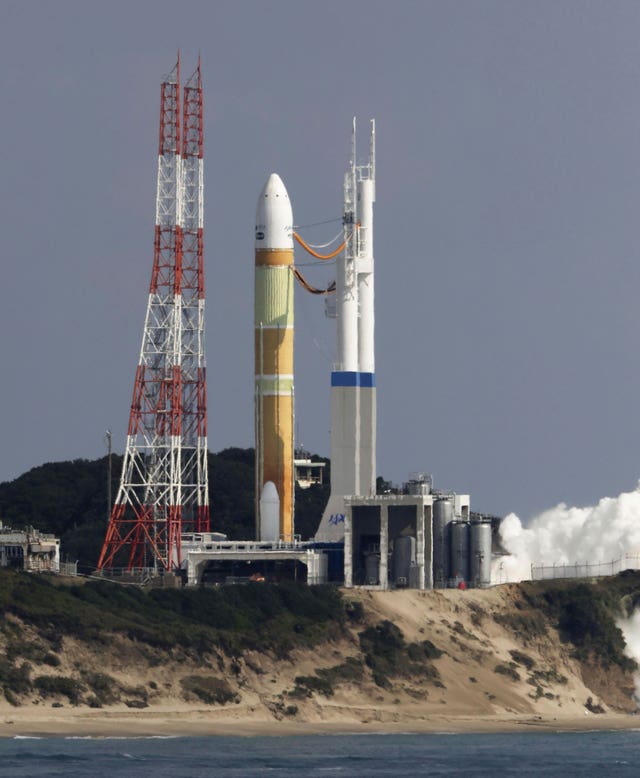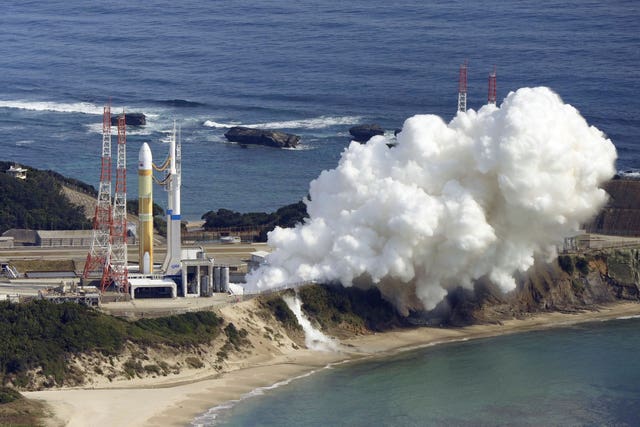Japan’s space agency has aborted the launch of the first of its new flagship H3 rockets, which was carrying an observation satellite fitted with an experimental infrared sensor that could detect missile launches.
The countdown had started, and the Japan Aerospace Exploration Agency (Jaxa) livestream and TV footage showed white smoke billowing from its main engine, but a pair of auxiliary rockets did not ignite, according to an announcement at the launch site.
“I know many people were waiting for and looking forward to this day. I’m so sorry and I feel extremely regretful and frustrated myself,” JAXA mission manager Masashi Okada said at a news conference.
Mr Okada said ignition of the main SE-9 engine was successful, but the subsequent electric signal to ignite a pair of auxiliary booster SRB-3s was not sent after an unidentified abnormality was detected in the process. He said the problem is not related to the engines but most likely in an electrical system of the first stage.
“We will investigate the cause as soon as possible and do our utmost to try again,” Mr Okada said. He did not give a timeline but said he hopes to resolve the problem and attempt another launch before the current launch window closes on March 10.

Friday’s launch problem at the Tanegashima Space Centre in southern Japan is a setback for Japan’s space programme which suffered an earlier failed launch in October of an Epsilon-series rocket.
Friday’s launch was put off from earlier in the week due to weather after a more than two-year postponement from 2020 because of an engine development delay.
The rocket — Japan’s first new series in more than 22 years — carries an advanced land observation satellite primarily tasked with earth observation and data collection for disaster response and map-making.
The H3 also carried an infrared sensor developed by the Defence Ministry which can monitor military activity including missile launches.

The 200 billion yen (£1.2 billion) H3 rocket was jointly developed by Jaxa and Mitsubishi Heavy Industries as a successor to the H-2A, which is due to retire after its milestone 50th launch expected in the coming years to end its 20-year service.
H3, which is almost 200ft long, can accommodate more satellites and other payloads than the 174ft H-2A, with its launch cost slashed by half at about 50 million yen (£310,000) by simplifying the design, manufacturing and operation in a bid to be lure more customers for its space launch service.
Space launch business has been increasingly competitive as the industry has been led by SpaceX and Arianespace.
The H3 rocket’s main engine was newly developed with fewer parts by altering the combustion method while replacing the majority of components with existing car parts.




Comments: Our rules
We want our comments to be a lively and valuable part of our community - a place where readers can debate and engage with the most important local issues. The ability to comment on our stories is a privilege, not a right, however, and that privilege may be withdrawn if it is abused or misused.
Please report any comments that break our rules.
Read the rules here